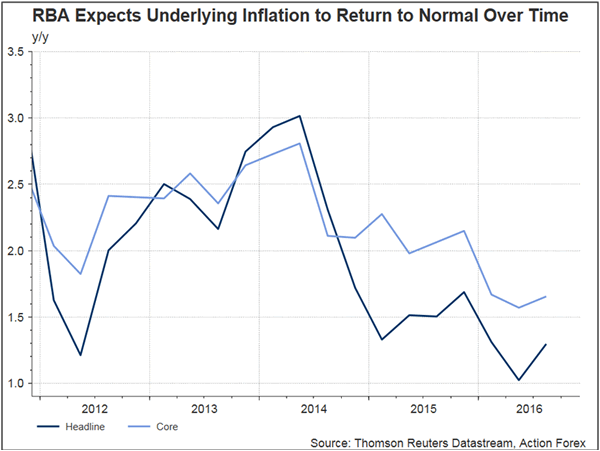RBA left the cash rate unchanged at 1.5%, as widely anticipated. Little news was seen in the accompany statement with the more notable change was policymakers’ acknowledgement in the rise in commodity prices. However, they stopped short of projecting its impacts on growth, for now. Today’s announcement lacks indication for the central bank’s monetary policy outlook. We expect future moves remain data-dependent but the central bank is not urgent in making another change in the policy rate.
Prices of coal and iron, along with many other commodities, have been soaring of late. RBA also acknowledged this situation, noting that, ‘commodity prices have risen over the course of this year, reflecting both stronger demand and cut-backs in supply in some countries’. As noted in the statement, ‘the higher commodity prices have supported a rise in Australia’s terms of trade, although they remain much lower than they have been in recent years. The higher prices are providing a boost to national income’.
The central bank continued to expect the global economy to expand at ‘a lower than average pace’. On the employment market, it acknowledged that improvement in the advanced economies over the past year. On China, its top trading partner, RBA noted that ‘economic conditions in China have steadied, supported by growth in infrastructure and property construction, although medium-term risks to growth remain’. The risks include subdued inflation across the globe. As suggested in the minutes, ‘the continuing subdued growth in labour costs means that inflation is expected to remain low for some time, before returning to more normal levels’.
Concerning domestic economic developments, RBA indicated that ‘the economy is continuing its transition following the mining investment boom’. It sees ‘some slowing in the year-ended growth rate is likely, before it picks up again’. On the job market, relevant indicators remained ‘somewhat mixed’. It noted that while ‘the unemployment rate has declined this year’, some measures of ‘labour underutilisation are little changed’. Policymakers would not be optimisitic over the employment market outlook, noting that ‘part-time employment has been growing strongly, but employment growth overall has slowed’.
The paragraph referring to the monetary stance stayed unchanged. As noted, policymakers ‘judged that holding the stance of policy unchanged at this meeting would be consistent with sustainable growth in the economy and achieving the inflation target over time’.















